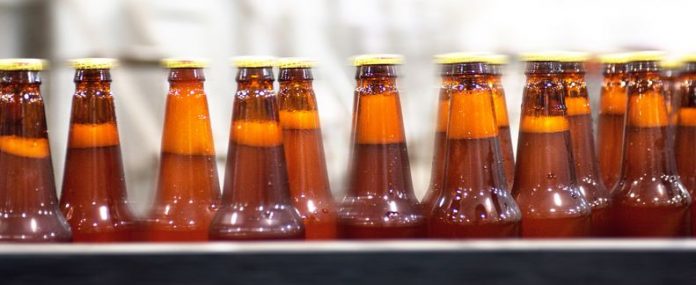Beer is essentially comprised of four primary ingredients: water, malt, yeast, and hops. These ingredients are boiled, cooled, and stored to ferment.
Beer, historically, was brewed without hops, which is now one of beer’s primary ingredients.
Hops are the flower of a vine type plant that is related to cannabis, but does not contain any of the chemicals that makes marijuana popular.
It can be grown in nearly any climate that provides sufficient water and sunlight. The vine may achieve a height of as much as 40 feet.
Hops, first used in Europe around 1100 AD, help to create more beer from the same quantity of malt.
Hops act as a preservative and flavoring agent. It adds a bitter flavor that tends to counterbalance the sweetness of malt sugar (maltose). It adds a fragrance that varies from piney to citrus-like.
As a preservative, it allows for lower alcohol content to be present, while helping keep the beer fresh enough to be consumed for more than just a few weeks.
Since the alcohol is the result of fermentation of barley grain, adding hops allows the brew master to use less grain to brew the same amount of beer. That keeps production costs lower.
Hops contribute to the flavor of beer in many ways. Hops contain alpha acids. As is common with some acids, when they are heated they become bitter.
At the same time, hops contain oils that add distinctive aromas. Aroma and taste are closely intertwined, and the introduction of a scent such as herbal or pine can influence the taste experience of the final product.
Additional hops are put in during the production process, because these oils easily vaporize and escape when they are heated.
To add even more aroma and flavor, additional hops are sometimes introduced at the end of the brewing process.
This technique contributes to ale’s more heady nose and flavor compared to most lagers.
Hops even contain a mild antibiotic that helps inhibit some of the organisms in the brew, allowing the yeast to conduct the fermentation process more efficiently.
The use of hops in brew making began around the beginning of the 12th century in Germany.
Early in the 16th century, the practice spread to Britain. Scottish ales began using hops much later as they will not grow in the cold climate.
The United States started using the technique in 1629.
Considering the geographic diversity and extended history, it is not hard to understand why today there are several dozen basic varieties of hops and several hundred sub-varieties.
Noble hops alone exist in four types. Low in bitterness and high in aroma, they originate in Central Europe and have exotic names like Saaz and Spalter, Tettnanger and Hallertau.
The names are derived largely from their region of origin.
An English hop used in some ale, Goldings, may be a name more familiar to English readers. Fuggles is a woody hop developed in England in the late 19th century.
zzHersbrucker is a German hop used in pale lagers, and Lublin comes from Poland. Having a berry-like aroma is the Pacific Gem, from New Zealand.
Since hops have practically no commercial value other than their use in beer making, the world is lucky to have clever brewmeisters that can include the plant in the manufacture of such a delightful beverage.

